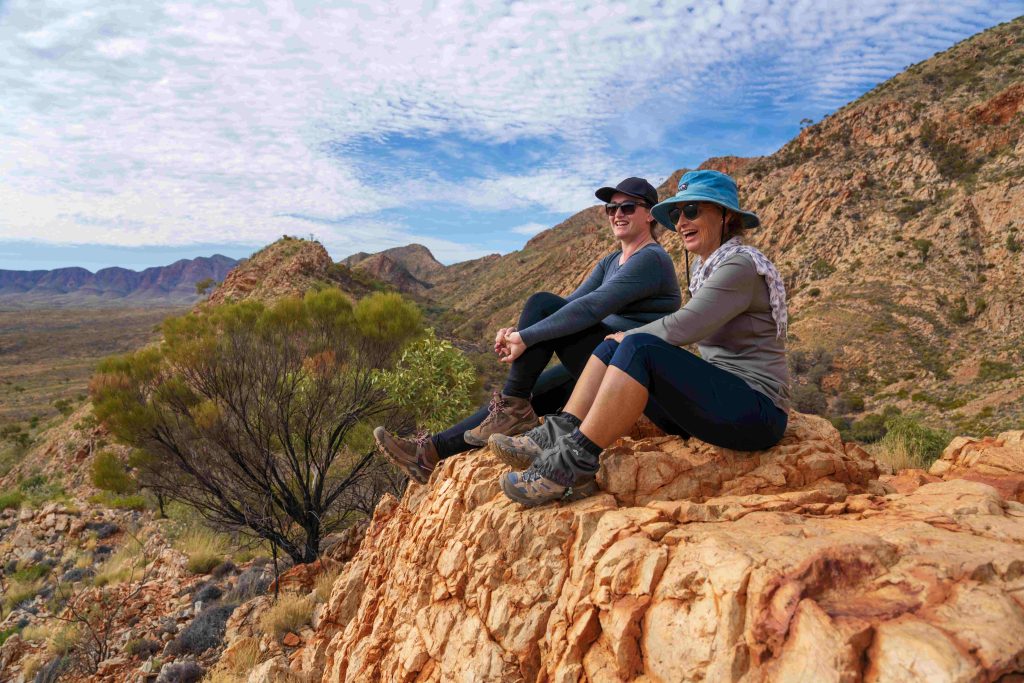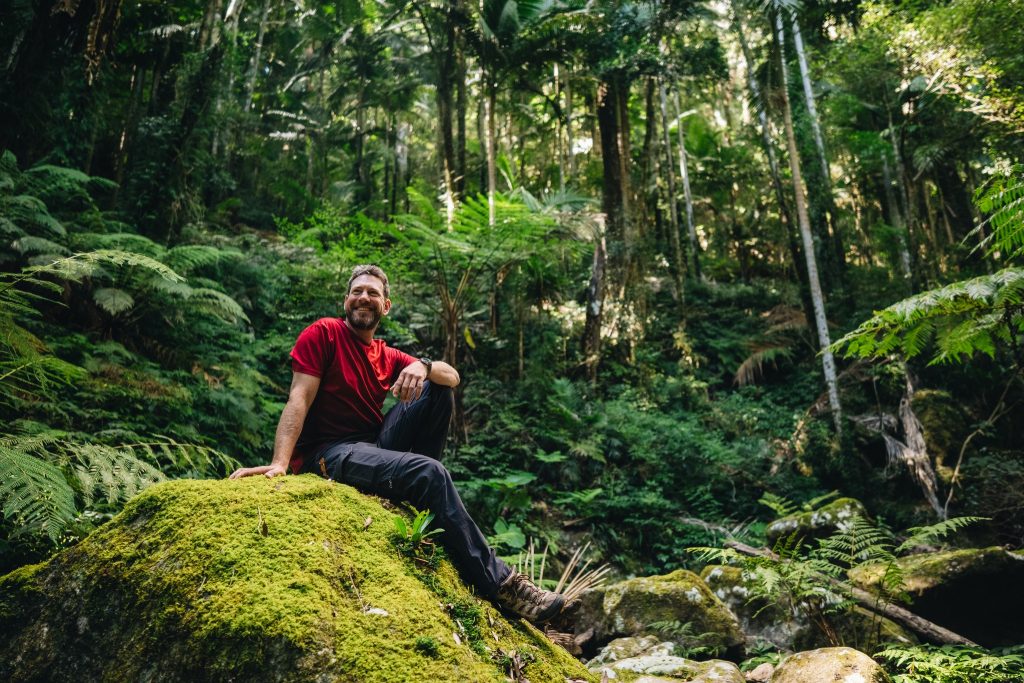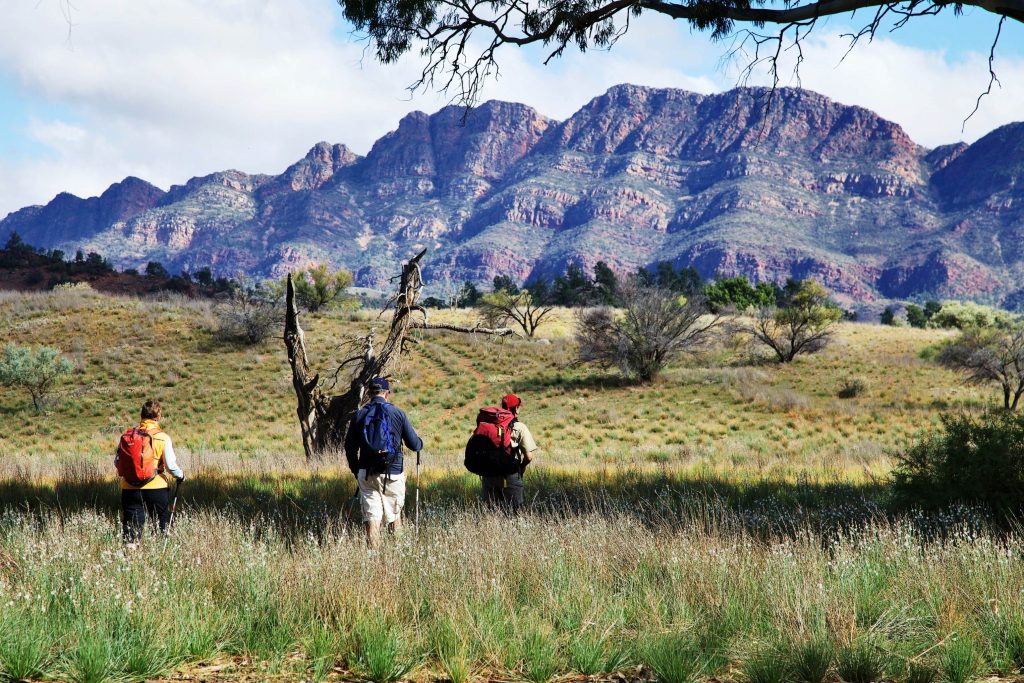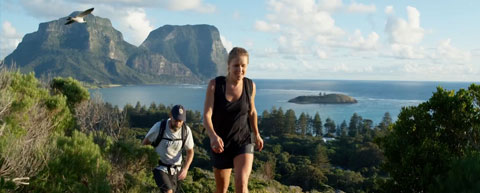Beating Burnout by Walking in Nature
Category: Inspiration

The signs arrive quietly: short sleep, a tight chest before meetings, a mind that won’t settle even when the day is over. Burnout rarely crashes in; it builds. And it feeds on one thing most of us can’t seem to find: space.
Walking gives that space back. It’s simple, accessible, and deeply human. Step after step, the body regulates, the breath deepens, and the mind finds room to soften. This is not about chasing a personal best. It’s about coming back to yourself.
Summary
- Walking is a natural circuit breaker for stress and mental fatigue.
- Even short walks can lift mood and clarity; multi-day walks amplify the effect.
- Research links time in nature with lower stress markers and calmer brain activity.
- Gentle, practical walking rituals protect energy during busy weeks.
- Multi-day guided walks create sustained space for reflection, connection, and rest.
Why walking works when you’re stretched thin
In Australia, reports of burnout are worryingly high compared with global averages. Microsoft’s Work Trend Index highlighted that around 62% of Australian employees were experiencing burnout versus 48% globally, a trend echoed across Australian summaries of the data (sources: Microsoft Work Trend Index; news.com.au; MHFA Australia).
Short walks help right away. A Curtin University team found that a 30-minute lunchtime walk in previously inactive office workers improved enthusiasm, relaxation, and motivation during the workday (source: Thøgersen-Ntoumani et al., Journal of Behavioral Nutrition and Physical Activity, 2014–2015 coverage). It’s a reminder that you don’t have to overhaul your life to feel different by 3pm.
Nature’s effect on stress and mood is measurable
You can feel the difference the moment you step under trees or onto a coastal path: air cooler on your cheeks, light shifting through leaves, shoulders dropping without permission. Research backs that felt sense.
- Stress physiology: Spending just 20 minutes in nature can reduce stress hormone levels in everyday settings (source: Harvard Health, 2019).
- Brain activity: After a 60-minute walk in a natural environment, activity in the amygdala — the brain region involved in stress processing — decreases. The same change doesn’t appear after an urban walk of the same length (source: Sudimac et al., Molecular Psychiatry, 2022; open-access summary via PMC).
- Mental health: Accumulating an activity volume similar to 150 minutes of brisk walking per week is associated with roughly a 25% lower risk of depression (source: Pearce et al., JAMA Psychiatry, 2022).

The power of stepping away for days, not minutes
If a single lunchtime stroll can shift your mood, imagine what happens when you give yourself several days of steady walking in nature. With multi-day walks, your nervous system finally has time to settle into a different rhythm: walk, eat, rest, talk, notice, sleep. Repeat.
There’s also a creativity effect when you spend longer outdoors. In research involving multiple days in natural settings, participants improved creative problem-solving performance by around 50% compared with pre-trip baselines, suggesting that extended time away from screens and schedules restores attention and sparks new thinking (source: Atchley, Strayer, and Atchley, PLoS ONE, 2012).
Walking with others restores connection
Burnout thrives in isolation and constant self-pressure. Walking gently breaks that pattern. Conversations flow easier when you’re moving side by side. Silences don’t feel awkward; they feel restorative. Whether it’s a lap around the block with a colleague or several days on a guided track, shared steps create a sense of belonging that softens stress.
Simple walking rituals that protect your energy
- Micro breaks: Trade a scroll between meetings for 5–10 minutes outside. Notice three things you can see, hear, and feel.
- Walking meetings: Take one recurring catch-up on the move each week. Many people find ideas arrive more easily when the body is in motion.
- Transition walks: A short morning loop to start the day with intention; an evening loop to mark its end.
- Weekend reset: Choose a bush trail, a coastal path, or a riverside track and give yourself a longer, unhurried walk.
- Multi-day immersion: A guided walking holiday removes decision fatigue. You walk, you’re fed, you rest well, and each day builds on the last.

What multi-day walking in Australia can feel like
Australia’s landscapes invite you to slow down. Think of long coastal boardwalks with the hush of surf, forest trails where the air smells faintly of eucalyptus, and high-country paths with big skies and clean horizons. On multi-day guided walks, meals are taken care of, and each day’s route brings fresh terrain and fresh headspace. You don’t have to think about logistics. Your only job is to keep putting one foot in front of the other and let the noise fall away.
If you’re starting to imagine a few days of walking, Great Walks of Australia curates guided, multi-day experiences across iconic regions. The collection includes coastal routes, alpine landscapes, island trails, and desert country guided by experienced operators, with comfortable stays at day’s end. The practical upside matters when you’re tired: someone else handles the planning, while you focus on your steps, your breath, and the conversations you’ve been too busy to have.
What changes when you walk regularly
- Your inner pace shifts. The world can still be fast, but your responses aren’t.
- Sleep returns a little more easily. Longer outdoor time often supports better sleep quality.
- Your mind has a place to put hard thoughts. They move through rather than around in circles.
- You remember what steady progress looks like. No urgency. Just steps.
Walking reminds us that progress isn’t always about pushing harder. It’s about showing up, moving gently, and letting nature do some of the work. Burnout keeps you stuck. Walking is motion, momentum, and medicine — one honest step at a time.
FAQs
Is walking enough exercise to help with burnout?
- For many people, yes. Even gentle, regular walking can reduce stress, improve mood, and support better sleep. The key is consistency and, when possible, time in green or blue spaces.
How long should I walk to feel a difference?
- Many people notice benefits from 10–30 minutes. Research suggests 20 minutes in nature can lower stress hormones, and a 60-minute nature walk can calm stress-related brain activity.
Do I have to hike hard trails to get the benefits?
- No. The benefits come from steady movement, time outdoors, and your own comfortable pace. A flat riverside path can be as restorative as a climb. Many of our walks have mixed terrain some particularly covering a variety of trail types over the course of days. This can suit different fitness levels. Take a look at our planning guide here to find the walk that suits your fitness level.
What if I’m not very fit?
- Start small and be kind to yourself. Our walk operators offer support leading up to your multi day walk and suggest a training plan. There are clear daily distances for each walk. Aim for regular short walks during the week to prepare and ideally do some back to back walks eg. longer walk on sat/sun or during the week thur/fri – if you can to prepare your body to the consecutive days walking.
- And if it’s more a confidence thing, about whether you can do it, mentally more than physically, take a look at our article her on Comfort and Confidence for First-Time Multi-day Walkers.
What makes a guided Great Walks of Australia multi-day walk helpful for burnout?
- Fewer decisions, a supportive group, delicious food and sleep, and a simple daily rhythm. You get the restorative parts of walking without the mental load of planning.
Got more questions? Head to our Frequently Asked Questions to find out more, or Contact Us and ask your specific questions. Dreaming about your next adventure: explore all of the guided multi-day options here at Great Walks of Australia
References
- Microsoft Work Trend Index: Great Expectations: Making Hybrid Work Work (2022) and Australian summaries (news.com.au; MHFA Australia).
- Lunchtime walking study: Thøgersen-Ntoumani et al., J Behav Nutr Phys Act (2014/2015 coverage via PubMed; Psychological Science news brief).
- Nature and stress hormones: Harvard Health Publishing, “A 20-minute nature break relieves stress” (2019).
- Amygdala and nature walks: Sudimac et al., Molecular Psychiatry (2022).
- Physical activity and depression: Pearce et al., JAMA Psychiatry (2022).
- Multi-day nature immersion and creativity: Atchley, Strayer, and Atchley, PLoS ONE (2012).
